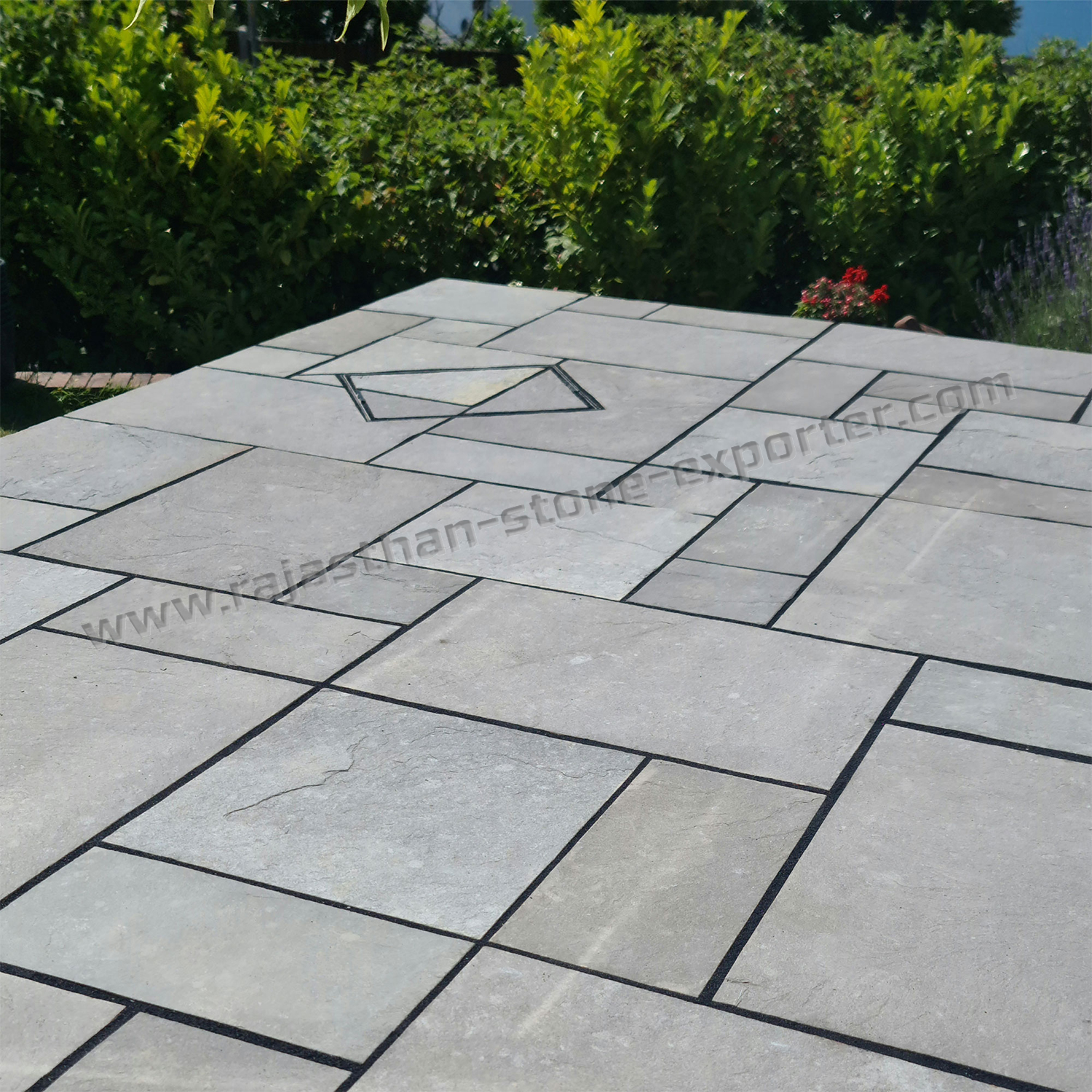This article explores the different types, properties, and uses of limestone in flooring, facades, countertops, fireplaces, and staircases..
Limestone is a sedimentary rock that has been widely used in construction and architecture for thousands of years. This natural stone is composed mainly of calcium carbonate and has unique properties that make it a versatile and durable building material. In this article, we will take a closer look at the different types of limestone and their uses in architecture.

Properties of Limestone
a. Hardness: Limestone is a relatively hard rock, making it durable and resistant to wear and tear. This makes it ideal for use in high-traffic areas, such as flooring, staircases, and countertops.
b. Porosity: Limestone is a porous material, meaning it has small pores on its surface that can absorb liquids and other substances. This property makes it important to properly seal limestone surfaces to prevent staining and other damage.
c. Aesthetics: Limestone has a unique and natural appearance, with variations in color and texture that can add visual interest to a building or structure. This natural beauty makes it a popular choice for use in architectural elements such as fireplaces, facades, and other decorative elements.
We have with us black limestone, brown limestone, blue limestone from India for your interiors, exterior, for your landscaping in hand cut paving, crazy paving, circle paving, cobbles (sets), stepping stones, palisades, walling stones, massive steps (krebs stone), pebbles for your pathways, benches, fountains, garden trim, pavers, walkways, walls, and sculptures etc.
Uses of Limestone in Architecture

Limestone is also known for its natural beauty, with variations in color and texture adding visual interest to a space. Limestone flooring is available in a variety of finishes and colors, making it a versatile option for different styles of architecture.
a. Building Facades: Limestone has been used as a cladding material in building facades for thousands of years due to its durability and aesthetic appeal. This natural stone provides a natural look and texture to the building and helps to insulate it from the elements. Limestone can be used in a variety of ways in building facades, including as blocks, slabs, and as a veneer material.
b. Flooring: Limestone is a popular choice for flooring due to its durability and resistance to wear and tear. This natural stone is available in a variety of finishes and colors, making it a versatile option for different styles of architecture. Limestone flooring can be used in a variety of ways, including as tiles, slabs, and as a paving material.
c. Countertops: Limestone is a popular choice for kitchen and bathroom countertops due to its durability and resistance to scratches and stains. This natural stone provides a natural look and texture to the room, making it a popular choice for modern and contemporary architecture. Limestone countertops can be used in a variety of ways, including as solid slabs and as tiles.
d. Staircases: Limestone is a popular choice for staircases due to its durability and resistance to wear and tear. This natural stone provides a natural look and texture to the staircase, making it a popular choice for modern and contemporary architecture. Limestone staircases can be used in a variety of ways, including as treads and risers, and as a cladding material.
e. Fireplaces: Limestone is a popular choice for fireplaces due to its durability and resistance to heat. This natural stone provides a natural look and texture to the fireplace, making it a popular choice for modern and contemporary architecture. Limestone fireplaces can be used in a variety of ways, including as mantels, hearths.
We are manufacturers suppliers and exporter of Indian limestone in the finishes like honed, brushed, polished, antiqued/tumbled, calibrated and non-calibrated mainly for big projects, architects, builders, landscapers, wholesalers, suppliers, trader, contractors, home owners and also for retail sellers across the world mainly to Germany, USA, UK, Australia, Canada, Italy etc.
Conclusion
In conclusion, limestone is a versatile and durable material that is widely used in construction and architecture. It is available in a variety of types, colors and finishes, making it a popular choice for different styles of architecture. Whether used for building facades, flooring, countertops, staircases, or fireplaces, limestone is a material that can add value and beauty to any building.
FAQ
Here are some frequently asked questions related to the use of limestone in architecture:
What is limestone and what are its properties?
Limestone is a sedimentary rock that is mainly composed of calcium carbonate. It is known for its durability, resistance to wear and tear, and natural aesthetic appeal. Limestone is also porous and can absorb liquids, making it important to properly seal its surface to prevent staining.
Why is limestone a popular choice for flooring in architecture?
Limestone is a popular choice for flooring due to its durability and resistance to wear and tear. It is also known for its natural beauty, with variations in color and texture adding visual interest to a space. Limestone flooring is available in a variety of finishes and colors, making it a versatile option for different styles of architecture.
What are some other uses of limestone in architecture?
Limestone is also commonly used as a cladding material for building facades, kitchen and bathroom countertops, fireplaces, and staircases. It provides a natural look and texture to these architectural elements, while also serving as a durable and heat-resistant material.
How does limestone affect the insulation of a building?
When used as a cladding material for building facades, limestone provides insulation to protect the building from the elements. It helps regulate the temperature of the building, making it more comfortable and energy-efficient.
What are the maintenance requirements for limestone surfaces in architecture?
Limestone surfaces should be sealed to prevent staining and other damage. Regular cleaning with a mild detergent and water is also recommended to keep the surface looking its best. Avoid using harsh chemicals and abrasive cleaners on limestone surfaces.
Are there any design limitations when using limestone in architecture?
Limestone is a versatile material that can be used in a variety of architectural styles. However, its porous nature means that it may require more maintenance and care compared to other building materials. It is also important to properly seal limestone surfaces to prevent staining and other damage.

